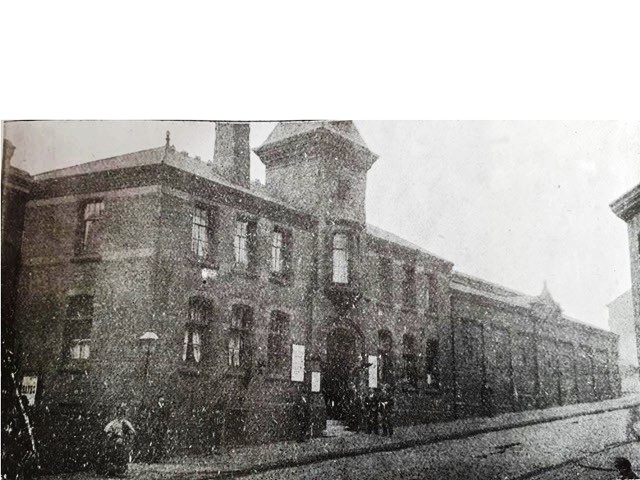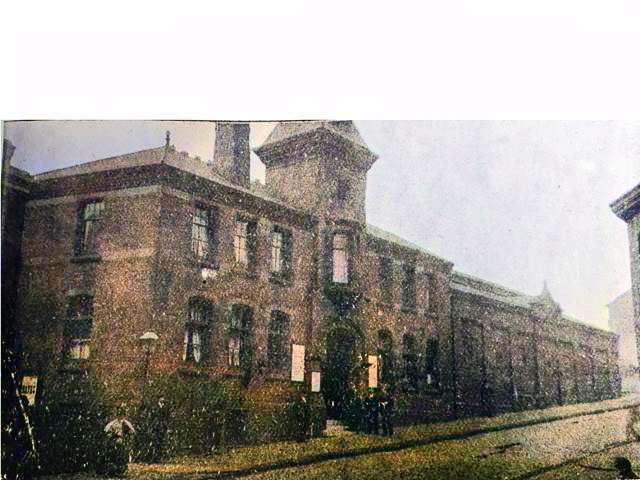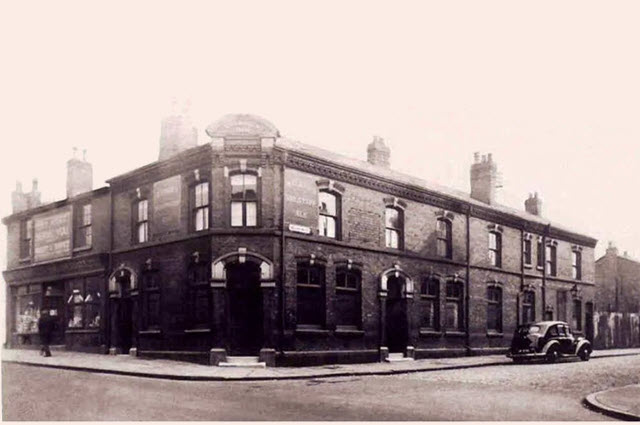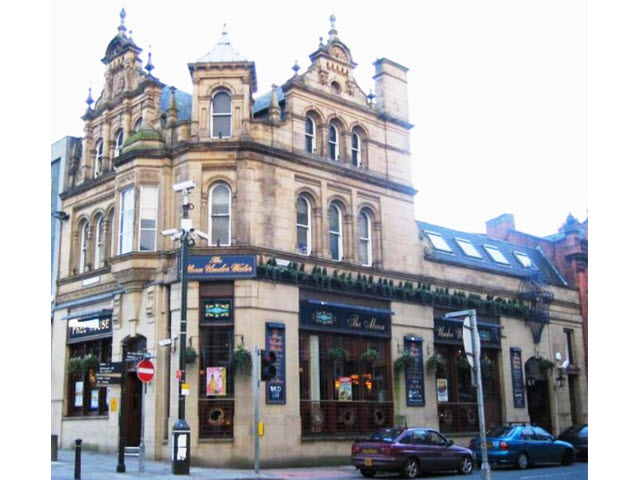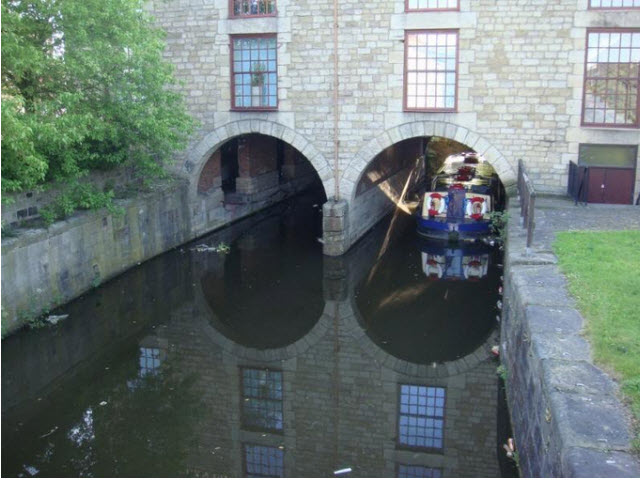Wigan Public Baths
Millgate, Wigan
Part of Group:
At Risk: No
Description
Foundation stone laid October 27th, 1881, by W. J. Lamb, Mayor, on behalf of T. Knowles, MP, who generously gave £1,000 towards the erection. Opened Whit Monday, May 29th, 1882, by R. F. Hopwood, Mayor. Cost £8,900. Architect, George Heaton.
The number and size of the baths are as follows : Gent's first plunge, 58ft. by 22ft. ; gent's second plunge, 68ft. by 26ft. ; ladies' plunge, 23ft. by 14ft. 6in. The number of private baths are as follows: Eight first class and 51 second class. There are also a salt water bath, a sulphur bath, an alkaline bath, and three vapour baths.
[Wigan Year Book 1889]
___________________________________________________________________________
Memories by Tom Walsh
In a time when many houses have two bathrooms with a loo to boot, it's easy to forget that not very long ago the majority of houses in Wigan had outside lavatories, and bathing facilities consisted of a tin bath. Younger people will find it difficult to believe the turmoil that ensued at bath time. The first job was to make sure the coast was clear, and a warning to fellow family members not to come into the kitchen during the ablutions. Most families with children also had smaller bathtubs, younger members had the relative luxury of taking their baths in front of the fire in the parlour. For the larger (tin) bath the water was heated in the washing boiler, which doubled as an 'immersion heater'. Some slightly better off families had most modern of 'mod cons' a geyser, a contraption fitted over the kitchen sink that gave instant and continuous hot water, luxury personified in days before central heating and indoor conveniences! If a quick bath was needed the the water might have to be heated in pans on the gas cooker. If a double quick bath was the order of the day then a strip wash would have to suffice. One lady in an adjoining street would dunk her child in the dolly tub after finishing the weekly wash ,she described the procedure as ' 'The Order of the Bath'! My Mam and others Mothers found this practice concerning, and thought the washing powder, usually 'DAZ' and the added 'Dolly Blue' might cause skin problems. I saw him in town a few years ago he looked perfectly alright. If the new biological powders had been available then it might have been a wholly different story!
Another feature younger people will find incredulous, the old swimming baths in Millgate also had another facility, a series of private cubicles containing a bath which would be filled by the attendant using a key spanner, kept in his overall pocket, guarded like the Crown Jewels, so that he, and he alone determined the depth and temperature of the water. In the time before pit head baths this amenity must have been a godsend for miners. People would sit on a bench in the waiting area waiting for a cubicle to become available, I've used this service very often in my teenage years the price was 6d (two and a half pence) it saved having to prepare the tin bath ,and move half the kitchen furniture! Unlike the swimming baths I don't think there was a time limit, the fact that you couldn't top up with hot water meant the temperature of the water would act as its own timekeeper.
The swimming baths on the other hand had a strict time regime, on entering the lady who took the entrance payment would issue you with a different coloured elastic band, this was put on your ankle, and an announcement would come from on high, a disembodied voice would shriek "Blue bands time up", or whichever colour was due. To be fair in quite times a lot of leeway was
given, but at busy periods the time limit was enforced as strictly as curfew in wartime!
The attendant in the Men's Pool was Mr. Spooner, known to one and all simply as 'Spooner'.
He ruled with a rod of iron, no lad would even think of disobeying him, if you did you'd finish up on Millgate quicker then you could say 'Jack Flash' .You had no right of appeal and it was pointless trying to get your parents to sympathies. In those days whatever those in authority said was sacrosanct . If you did grumble to your parents about your banishment from the pool, the best you would get was "You must have done something wrong followed by "It's Mr. Spooner to you" .
Today I'm afraid in many cases the opposite is true, in such a scenario the child's story would be believed without a second thought. A full inquiry would be demanded to ascertain why little Johnny or Mary was spoken to so harshly and if any longterm damage might of been inflicted by the earwigging!
I mentioned Spooner, sorry Mr Spooners, attitude to discipline, and there no doubt he was a disciplinarian. He was a tall man, or at least he seemed tall to me as a youngster. He had a definite military bearing with a neat little moustache. I used to think I could detect a sense of humour, often if anything amusing happened or anything funny was said I could see the flicker of a smile, mind you it was only a flicker, before his face rejoined its normal stone faced countenance.
I had the pleasure of meeting him years later, he was as nice a man you would ever wish to meet, I realised then that he had to adopt a no nonsense attitude to keep in check upwards of 80 children. He must have dreaded school holidays with a vengeance, six weeks of almost constant chaos!
I mentioned earlier the Men's Pool, again many will be surprised that there were two completely separate pools. One half day a week mixed bathing was permitted, this took place in the women's pool which was much smaller than the mens, and didn't have the balcony that the mens pool had . There were changing cubicles on either side of the balcony with a communal one at one end . It was from that lofty position that Mr Spooner could keep a beady eye on proceedings
This pool could also be converted into a dance floor, the pool had a floor laid over it ,and hey presto you had a ballroom it was a wonderful use of resources. It was hired out for private functions, available for weddings and such like, in fact it's full name was ' The Baths Assembly Hall' I remember attending the 'St Patrick's Annual Children's Ball' there. I often wondered as a child if the pool was emptied before the dance floor was laid over 'the plunge'. I never got the answer to that particular conundrum! At one of the dances I remember asking a teacher about this poser, back came the reply " It's for me to know and you to find out!". In those days this was the standard answer when the teachers didn't know the answer themselves! I also asked the lady in the kiosk the same question, her reply, equally unhelpful "that would be telling". Someone in Wigan must know the answer to this mystery that occupied many St Patrick's children's imaginations on their annual treat, along with countless thousands of couples who danced the night away, also wondering what lay beneath the polished floor.
Memories of Wigan Baths - Courtesy of wiganworld
Manchester Courier 28th Oct 1881
Yesterday afternoon the foundation stone of a new public baths for Wigan was laid by the Mayor, Mr. W.. Lamb, in the absence of Mr. T. Knowles, M.P., who did not attend in consequence of the advice of his medical adviser, Sir Wm. Jenner, that the excitement might delay his complete recovery. The Corporation has adopted the Baths and Washhouses Act, and under a local Act has obtained power to borrow £10,000 for the erection of baths. The architect of the buildings is Mr. George Heaton, of Wigan, who was awarded the first prize in the contest for designs, and the builder Mr. William Winnard, of Wigan.
After the laying of the foundation stone Mr. John Knowles, son of Mr. Thomas Knowles, M.P.,handed to the mayor a cheque for £1,000 from his father towards the cost of the erection of the buildings, in accordance with the promise by the late Mrs.Knowles four years ago that she would contribute that amount towards the erection of baths for Wigan. A special resolution was passed thanking Mr. Knowles for his generous gift. After the ceremony the mayor entertained a numerous company to luncheon in the Public Hall. The cost of the baths and the purchase of the site, which is close to the free library, is put down at £7,400

